NFT art galleries have appeared as a consequence of the increase in popularity of non-fungible tokens, digital assets, Blockchain technology, and the virtual world. Here NFT enthusiasts can check an NFT collection of their interest, upload their works, or even purchase digital artwork. But not going further, let’s learn how to create an NFT Gallery!
What Is an NFT Gallery?
An NFT gallery is a gallery space where you, as owner and curator, can exhibit the works of art of your interest, which people can visit to check the latest trends in the NFT art world. In these digital or physical spaces, an NFT owner or artist can showcase their work or property to reach new buyers and audiences and become popular among NFT creators.
Types of NFT Gallery
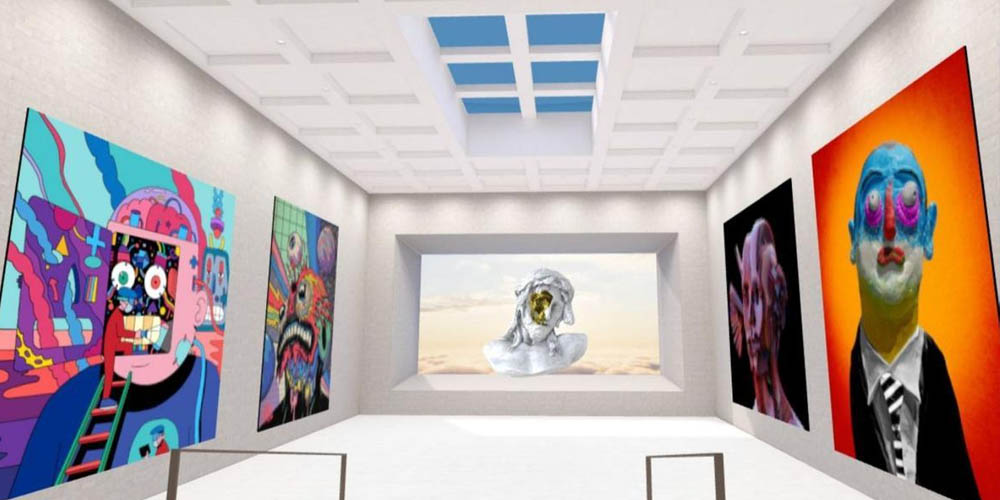
You can create several types of galleries for your favorite artists to display their NFTs, and visitors experience excellent art pieces.
Physical NFT Galleries
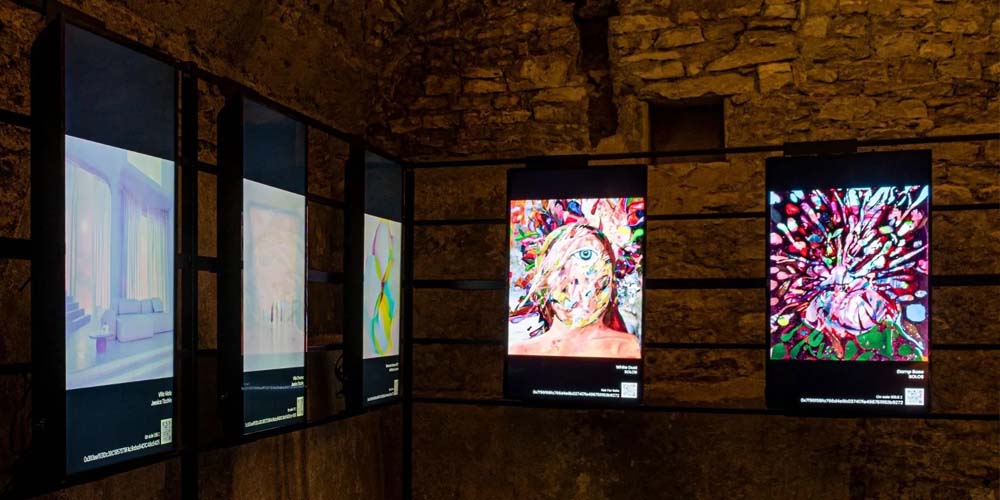
Many physical NFT galleries opened in the last few years. Demand is so high that spaces for NFT assets have become mandatory in art. These physical spaces collect art and showcase it to the general public, just like any other art gallery that exhibits paintings, photos, engravings, sculptures, and more.
A good example of this is the Crypto Portal: Prague’s NFT Gallery, which opened in a 12th-century basements.
Virtual 2D Galleries
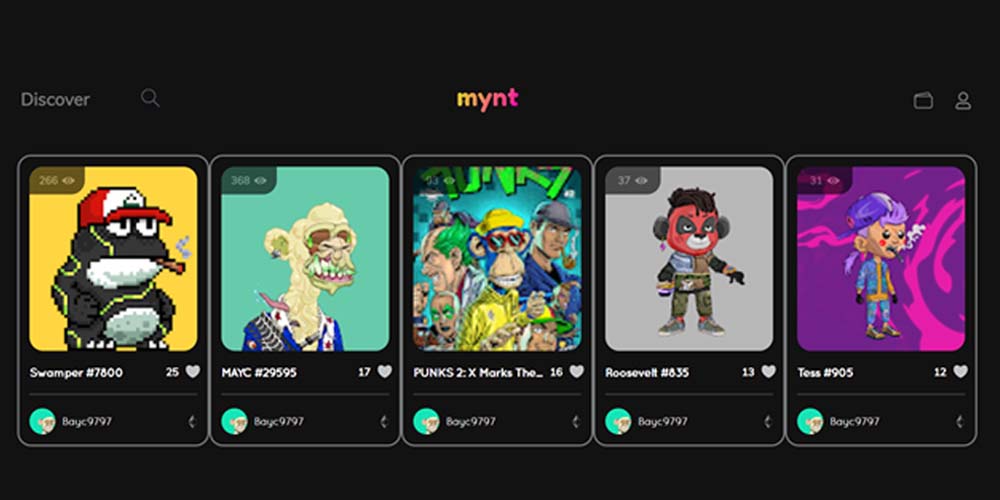
Now let’s see the digital versions of physical NFT galleries. The first is the virtual 2D galleries, a space that works like a regular website, which exhibits all the NFTs like standard images. Of course, the map function is similar to a physical gallery, with multiple rooms and special exhibitions. Most NFT marketplaces work like virtual 2D galleries.
All the NFT marketplaces, such as OpenSea and Superrare fit this category. Strictly, these are not galleries but they work as one. In this context, Mynt is one of the famous NFT galleries.
Virtual 3D Galleries
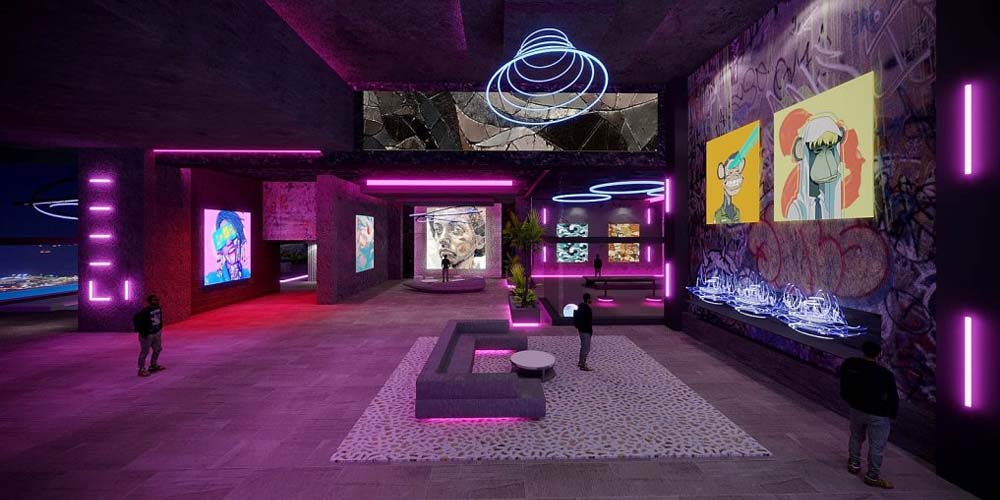
These spaces are very similar to virtual 2D galleries. The main difference is they integrate a 3D space, a roadmap through which visitors and users can interact with NFTs. Virtual 3D galleries adopt a first-person point of view. This way, visitors can tour the gallery just like a physical gallery, checking different rooms, panels, and collections.
A good example of an NFT 3D gallery is Spatial, an NFT environment where you can create your own virtual space to exhibit you digital art. It’s free and you can also explore immersive spaces to live different experiences.
VR and AR Galleries
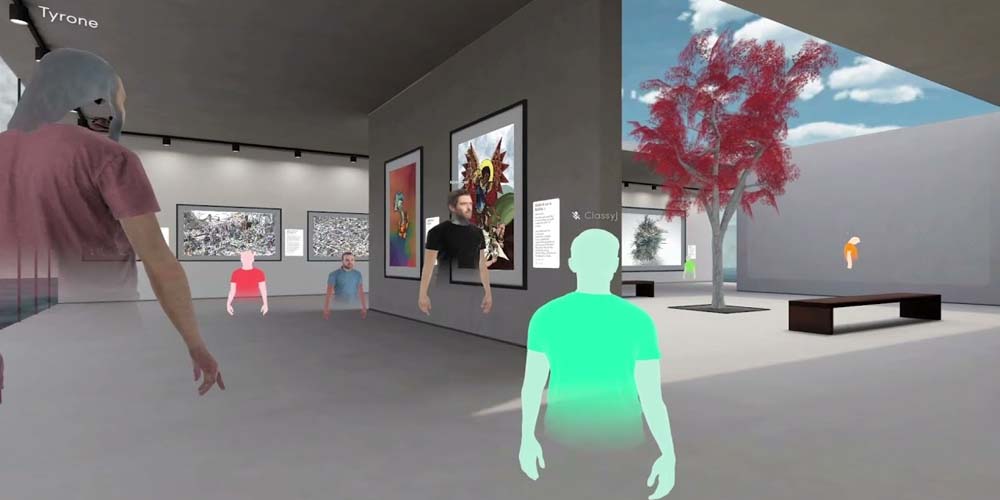
A VR gallery (Virtual Reality gallery) is a 3D space similar to that mentioned above, but offers a more profound experience in exploration and freedom, and a feeling very similar to the real world. Experiencing a gallery of this nature requires visitors to use VR goggles or a Virtual Reality headset. It’s worth mentioning that VR galleries use a completely virtual environment.
On the other hand, AR galleries use real-world settings, spaces, and rooms, which visitors can explore with high resolution, displaying artworks and NFTs as if they’re in a real environment.
Both use NFT metadata and several parameters to create the gallery’s environment and tour. Tours can morph according to the preference of the visitor. Many of these galleries are part of a big metaverse.
The $Whale NFT Vault VR Gallery is a good example of this type of gallery. Here members brought some of the top NFT assets through an immersive virtual realty gallery.
Choose the Monetization Models
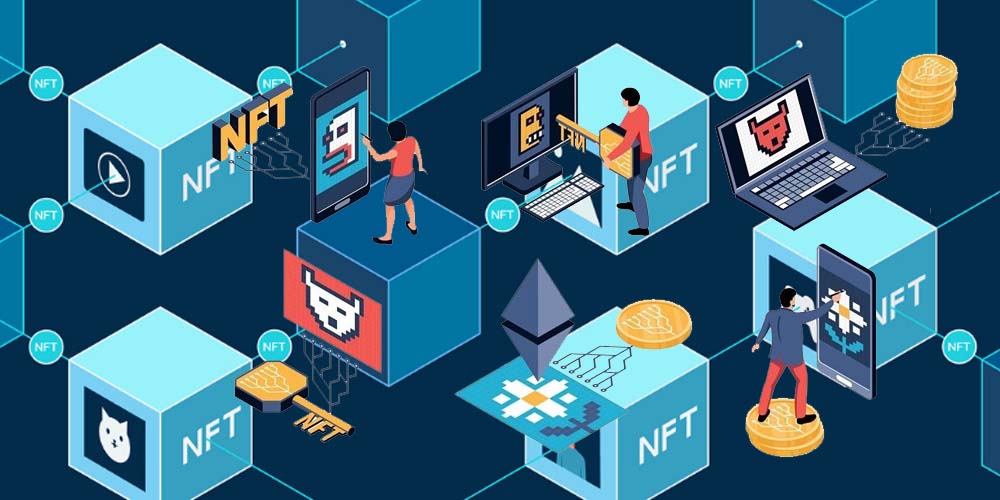
When creating a spatial NFT gallery, you must define the monetization model to maintain the functionality as a collector or curator. This aspect also works similarly to the real world. In this sense, there are a few ways of monetizing your art gallery.
Listing Fees
Charging fees when an artist or creator lists a new NFT image is the most common way of monetizing your intended NFT gallery. Considering the profit an artist gets when selling NFTs, these fees are insignificant.
The listing fees you charge will depend on the type of NFT you upload to the website. For example, if the image is a simple JPG, it will be easily added to the gallery, and the fees will be relatively small.
On the other hand, if an artist has created a more complex NFT, say a 3D animation with multiple frames, then the listing fees will be higher. This is because of the required investment to implement the proper space to showcase that NFT.
Fees for Sales
This is the method that most physical and digital galleries use to get profits when showcasing collections. It’s very straightforward since you’ll receive fees whenever you sell an NFT artwork. Of course, the creator will take the majority of the profits. You have to agree on the percentage of the profits in advance. We recommend you agree between 10% and 30%.
User Donations
This method mainly works for public galleries aiming to promote public art and new artists on the web. In this sense, you can ask the community or visitors to support any NFT project your gallery showcases by donating. The most common media to perform this donation are
Patreon, Buy Me a Coffee, Kickstarter, etcetera. Actions like this transform the future of NFT spaces by democratizing accessibility.
Periodical Fee
This is an excellent methodology for gathering resources when artists or collectors want to showcase their properties briefly. In this type, you charge a small periodical fee. This fee, just like in the first type, will depend on the nature of the NFT or the value of the artwork.
Advertising Model
You can use the classical advertising model other media use to gather resources. In this sense, you can insert banners or add NFT promotions in specific sections of the gallery, which visitors visualize when navigating the art space.
NFT Art Gallery Functions
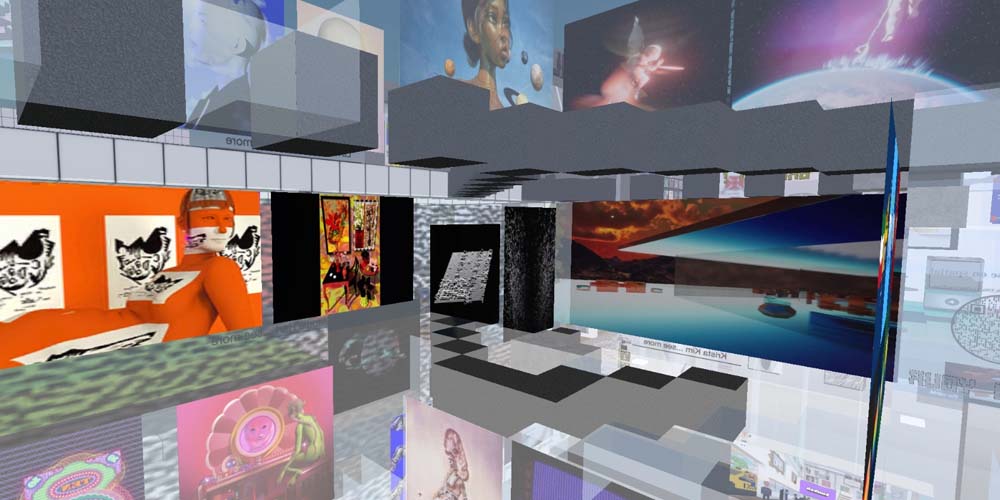
Now, we mention the main functions that a competent NFT gallery should boast. All these functions are for providing the best service to NFT enthusiasts.
Registration
Your NFT gallery must provide a simple registration process for creating a user account for two types of visitors:
- Beginners. Since this is a new way of experiencing NFT art exhibitions, you must briefly introduce the functions and the minting process.
- Seniors. For more experienced users, providing a familiar approach to the gallery’s functions is unnecessary. This way, you can offer the best experience possible.
The registration process should facilitate users to join the art gallery as collectors or exhibitors.
Showcase
Showcasing is the first thing you must consider when creating your NFT gallery. Showcasing is the primary function of any art gallery, either physical or virtual. Paying special attention to how your NFT space showcases the art and collections will make the difference between yours and other galleries.
Remember that audiences prefer easy-to-understand interfaces, interactions, and virtual spaces, where intuition is the cornerstone of the experience.
Adding Artworks to the Showcase
Your gallery must provide easy access to uploading or adding your artwork to the showcase. Many NFT platforms and digital galleries hinder this process with unnecessary protocols or confusing procedures.
Your NFT space must integrate a straightforward and multisystemic process that helps artists visualize their NFTs, such as frames, size, additional effects, etc.
You can also offer artists a creation section where they can create and develop their pages or spaces for several types of NFTs.
Integrating Wallets
Any movement in the NFT world involves having a cryptocurrency wallet where you extract or receive cryptos for paying fees and other processing costs. Wallets will help your visitors manage their digital assets and connect their creations with your gallery.
Currently, the most popular cryptocurrency wallets are CoinBase and Metamask. Both are amazing and fulfill the requirements without problems. Then, provide visitors the option to link their crypto wallets.
Some Features Your Virtual Gallery Should Integrate
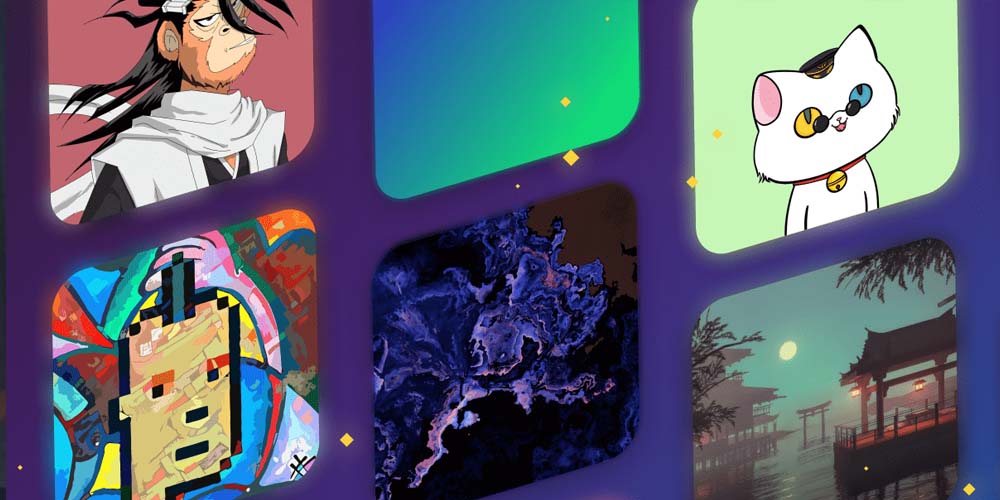
Editor for Creating Virtual Spaces and Rooms
Users of all systems, platforms, and metaverse appreciate when developers allow them to create their own virtual spaces. In the current virtual world, personalization is everything!
Thus, having an editor that lets visitors create unique spaces for NFT collections would be convenient for any user.
Smart Search Engine
Visitors want to save time trying to find a specific type of NFT. That’s why you should focus on putting an intelligent search engine that allows users to navigate by name, type, style, technique, author, collection, rating, and view number, among others. Thanks to this, a specific list of NFTs will be displayed quickly in an additional window.
Zooming Feature
A zoom feature is crucial when checking the quality of a piece of artwork, including NFTs. Configure your app to insert a zooming feature that allows visitors to review the digital assets they hope to buy deeply.
NFT Panel Information
One of the aspects that makes NFTs unique is their metadata supported by Blockchain technology. Your gallery must include panel information where users can check all the data of a featured NFT, such as name, frame, artist, year, collection, score ranking, blockchain, and all its details.
NFT Video Player
Many creators are simply starting to create NFT videos since they provide a different approach to digital asset manifestation. In this regard, the idea is that your gallery puts a particular space where visitors can loop the video or cease it at its disposal.
Panel for Social Interacting
Integration and interactions are two of the most critical pillars in the metaverse and the NFT world. And it gains special relevance when creators, collectors, holders, industries, and more need to promote new projects. Give visitors a chance to contact the artists by direct message, e-mail, or phone if they have a representative or something similar. Besides, your gallery must facilitate communication through social media channels and Discord.
Marketing Instruments
They correspond to tools artists, curators, and collectors can use to promote their artwork or brand within your platform and outside of it. A good idea in this sense is the possibility of cooperation between external sources and artists. You can also create sections where artists can showcase their works on social media, such as Youtube or Facebook.
Token Market
Finally, it would help if you tried to offer an auction system and several payment methods for users to sell their NFTs.
Designing the UI/UX of the Platform
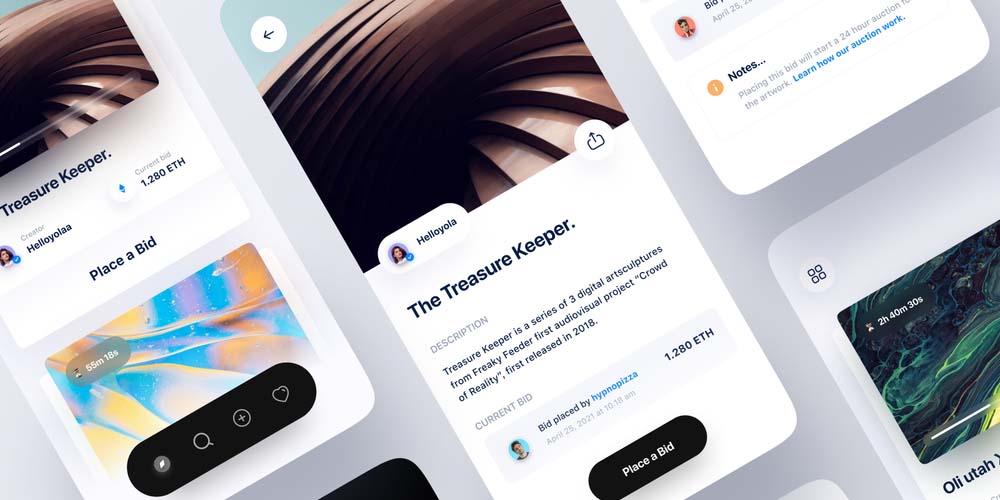
Don’t forget that UI/UX design is an important aspect of any website, home page, platform, application, and digital NFT gallery. This is because visitors interact with everything on the website through the user interface design and the user experience design.
The readability of the main menu, the type of font or color of the windows or sections – everything takes on a particular relevance to provide a good user experience, which leads to happy enthusiasts and more purchases.
Below we mention the options you should consider when designing the UI/UX of your NFT platform.
Here is the possible technology stack for the NFT gallery backend:
- Blockchain technology: Ethereum, Solana, Binance Smart Chain, Polkadot, etc.
- Frameworks: Spring, Flask, Symfony.
- Programming language: PHP, Java, Python.
- SQL database: MySQL, MS SQL, PostgreSQL, MariaDB, Oracle.
- NoSQL database: MongoDB, Cassandra, DynamoDB.
- Search engine: Apache Solr, Elasticsearch.
- DevOps: GitLab CI, TeamCity, Terraform, GoCD Jenkins.
- Caching: Redis, Memcached.
Below the technology stack options for the NFT gallery frontend:
- Web languages: Angular.JS, React.JS, Backbone, and Ember.
- Languages for mobile: Kotlin for Android, Java, and Swift for iOS.
- Architecture: MVVM for Android and MVC, MVP, MVVM, and VIPER for iOS.
- IDE: Xcode for iOS and Android Studio.
- SDK: Android SDK and iOS SDK.
The Bottom Line
Building your digital NFT gallery is a matter of creativity and technique. Remembering the advice we’ve given you in this article is a good starting point for creating your NFT space. Of course, you’ll need the help of a programmer who helps you with codes and
Somebody essentially help to make significantly articles I’d state. This is the first time I frequented your web page and up to now? I surprised with the research you made to make this actual post incredible. Fantastic job!
Usually I do not read article on blogs, however I would like to say that this write-up very compelled me to take a look at and do it! Your writing style has been amazed me. Thank you, very nice article.